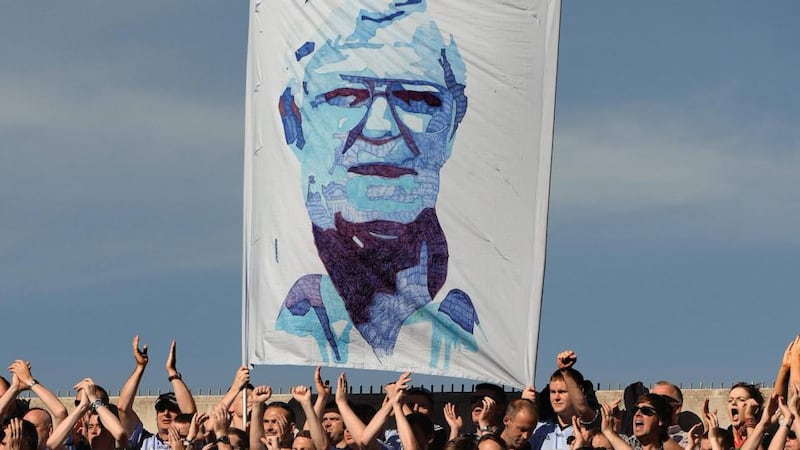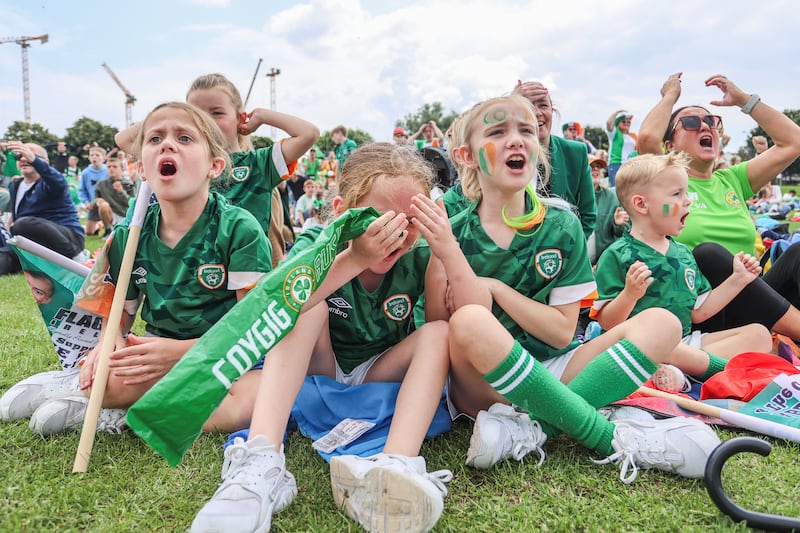Elegy time for Dublin. Those in attendance at the media event last week were struck by how emotional manager Dessie Farrell became when talking about the contribution of his captain James McCarthy to the county jersey over more than a decade.
It fitted with the general view that once the coming All-Ireland final is over, win or lose, there is likely to be a significant generational shift in the Leinster champions’ dressingroom.
First, there is familiar business.
Dublin-Kerry or Kerry-Dublin can be said to be a modern construct but there is also a huge tradition. It’s the most-played rivalry in championship history. Sunday is the 32nd meeting, putting it ahead even of Cork-Kilkenny in hurling, on 29.
Seán Moran: League’s championship promise may be clouding but it remains bright at the top
Malachy Clerkin: The GAA should make more of St Patrick’s Day - and more of its intercounty stars
Sports Review 2023: Mary Hannigan picks the best quotes from the sporting year
GAA happy that GAAGo has ‘bedded in well’ as 2024 season launches
The 1970s recreated it with the clash of Kevin Heffernan and Mick O’Dwyer but what is striking is how unbalanced it was. Dublin’s win in the 1976 final was the county’s first victory over Kerry in a final since the last of their three-in-row successes in the 1923 championship.
It wouldn’t be emulated for another 35 years, by which stage Dublin had failed to win the intervening nine championship encounters.
Ciarán Ó hEadhra, of Asgard Media, and who has produced GAA coverage for TV3 and Sky, once said that along with obvious factors such as the size of population, the popularity of the two counties with broadcasters is easily explained.
Their rivalry’s golden era came at almost the precise time that Gaelic games erupted out of monochrome.
“The other thing about Dublin – and this applies to Kerry – is that they are both GAA brands that are a creation of television. The first finals we remember in colour are Dublin-Kerry finals from the 1970s.”
At times it looks wasted on the drabness of Croke Park in the 1970s, the murky palette of the crowds and what seemed constantly brooding skies, spilling down rain.
In that era Heffernan’s messianic drive had its origins in his playing career from its intercounty origins.
Kerry was the alpha and omega of his football world and an All-Ireland career that began against them with defeat in the 1946 All-Ireland minor final, ended the same way when he resigned as manager after the 1985 senior final.
If there was a watershed, again Kerry provided it in the 1955 final when Dublin, for the first time a team of locals, seriously trained and in the great approbation of the age, “scientific” fell to traditional “catch-and-kick” tactics.
Heffernan said it “formed a large part of what I became as a person”. After the 1976 win, he was – temporarily – convinced that there were no more worlds to conquer and stepped down, leaving Tony Hanahoe as a rare example of a GAA player-manager.

Somehow, despite the lack of competitiveness that followed in the 1980s, the rivalry ricocheted down the decades.
By the time Dublin’s team of the 1990s eventually won an All-Ireland in 1995, the Kerry rivalry had been in cold storage for nearly a decade. Yet for the management of Pat O’Neill, Jim Brogan and others from Heffernan’s team, there was the proxy engagement of taking on Mick O’Dwyer, now in charge of Kildare.
When current manager Dessie Farrell faced Dublin’s ultimate opposition in 2001, the team were outsiders and played that way for most of the match. But they managed to hurl two thunderbolts of goals in the last 10 minutes that turned around the match and left Kerry requiring the famous Maurice Fitzgerald line-ball to equalise.
Before half-time, Dublin squandered three goal chances, including one from Farrell. In his memoir Tangled Up in Blue, he recalled it: “I suffered the ignominy of the most glaring miss of my career when I spurned an open goal from, well, a yard.”
Dublin’s All-Ireland in 2011 was managed by Pat Gilroy, son of a friend of Heffernan and also a member of St Vincent’s club. He had never played championship against Kerry in his county career, which included winning the 1995 All-Ireland, but he had two seismic encounters as manager.
The first ended in deathless phrasemaking, his team compared to “startled earwigs”, but also a determination to find new and more robust insects, whereas the second ended two years later with Stephen Cluxton’s equally immortal free.
Farrell’s counterpart Jack O’Connor has spent 20 years around this fixture. The memorable defeat in 2011 shouldn’t obscure his overall record, which reads one defeat but three victories, each one leading to an All-Ireland, in 2004, 2009 and last year.
O’Connor avoided the decade of Jim Gavin and the torch he took to the rivalry’s established priorities. Symbolically his first matches in charge took place in January 2013, the month Heffernan died.
Gavin acknowledged the passing of the flame. “He was a visionary, a strategist and those guys stand on his shoulders. Certainly I, and the guys there, wouldn’t be where we are in Dublin GAA without the vision of Kevin Heffernan.”
In 2002, RTÉ’s Reeling in the Years for 1976 ends with Dublin players and supporters heading in triumph to the Hill, rare 1970s All-Ireland sunshine glinting off the Sam Maguire.
As the credits roll, Thin Lizzy soundtrack the moment. The Boys Are Back in Town will become familiar in the Gavin years as the perennial accompaniment to All-Ireland triumph, but maybe the inspiration came from this programme.
Kerry have been beaten in the final and the ancient rivalry revived. Dublin and their amorphous pack of supporters are modern, sky blue and jubilant, a city supreme.
That’s all of 47 years ago but this weekend there is renewal and enduring re-engagement. They are back in the final, Kerry again with the All-Ireland and Dublin with intent, both picking up the thread of generations gone and for those yet to come.
Spread the word around.






